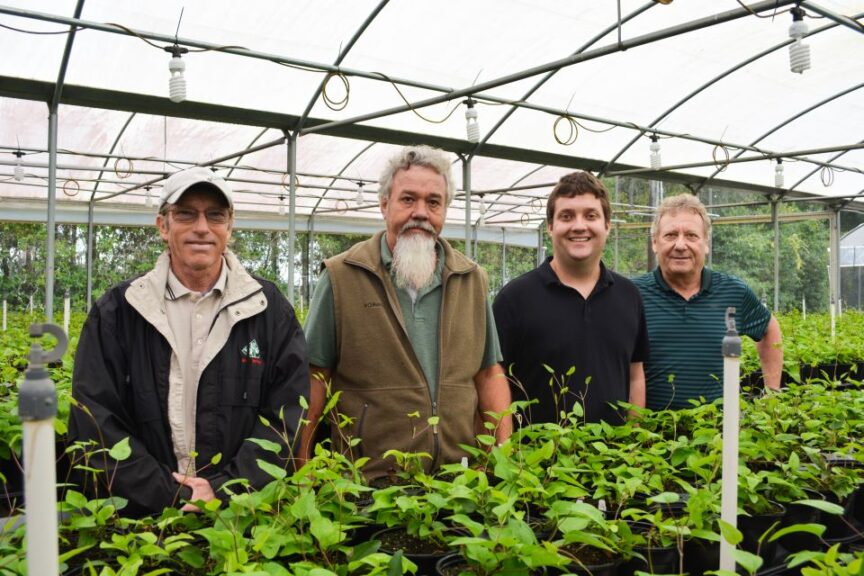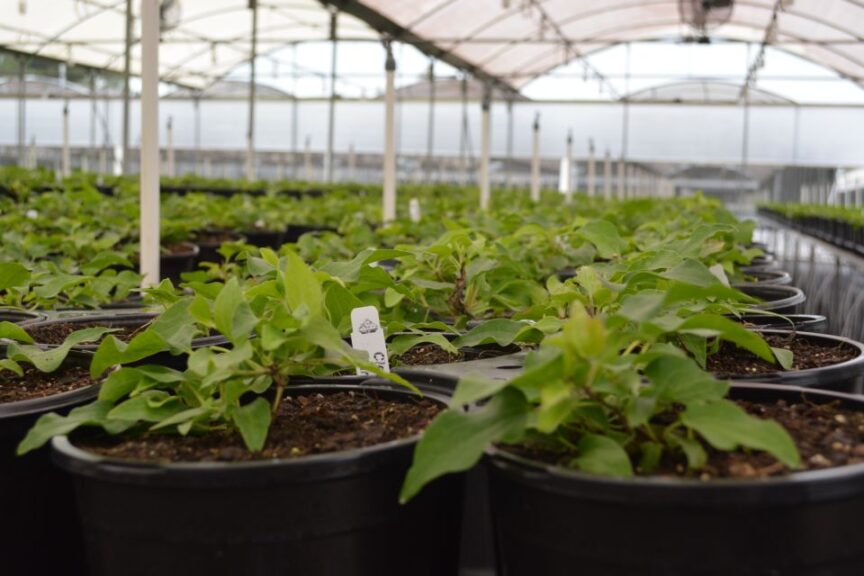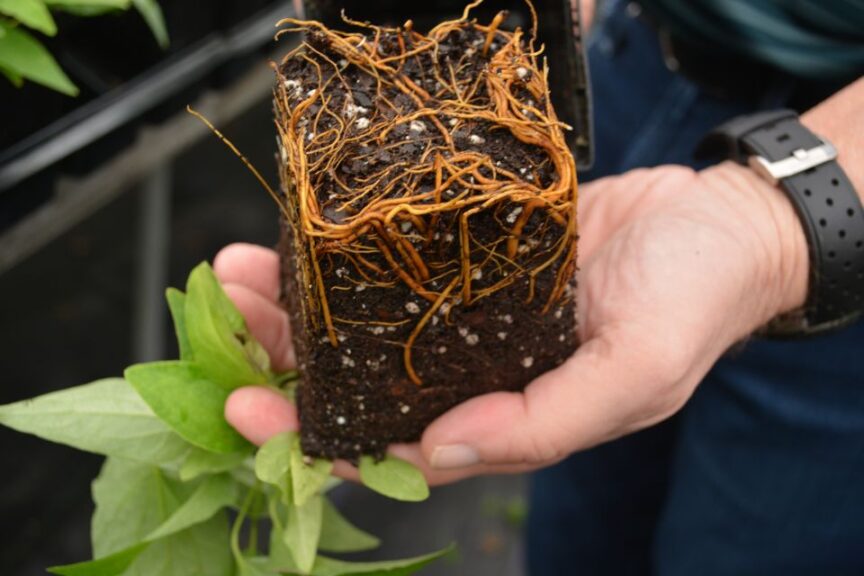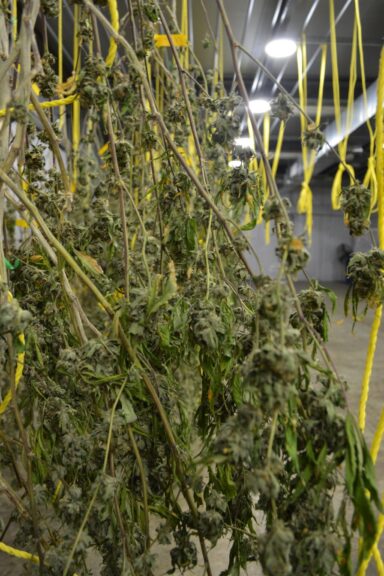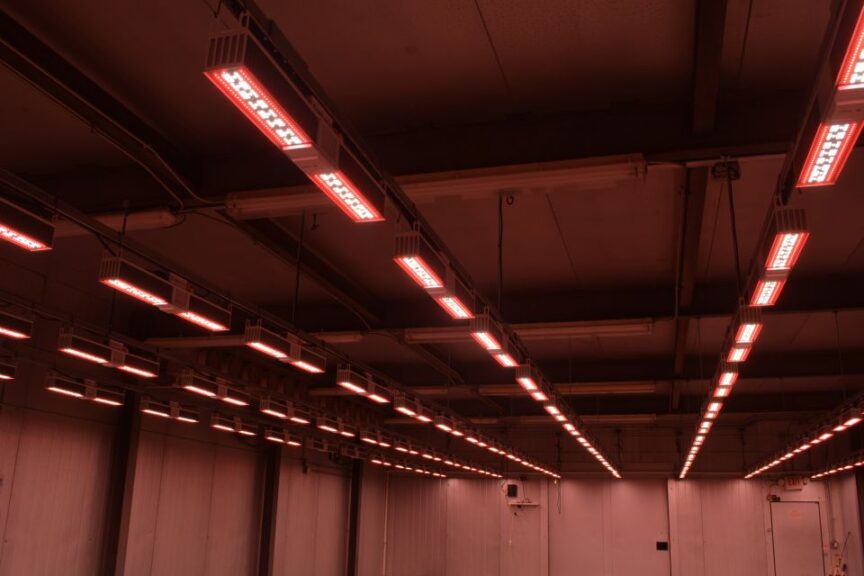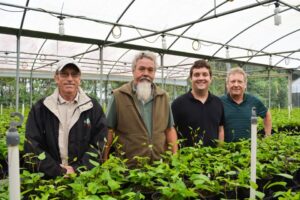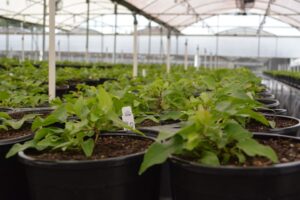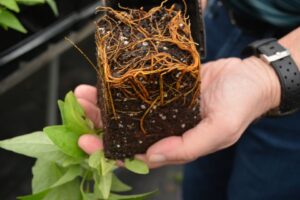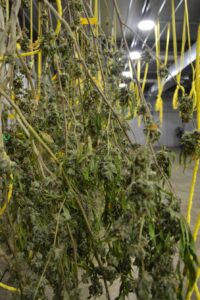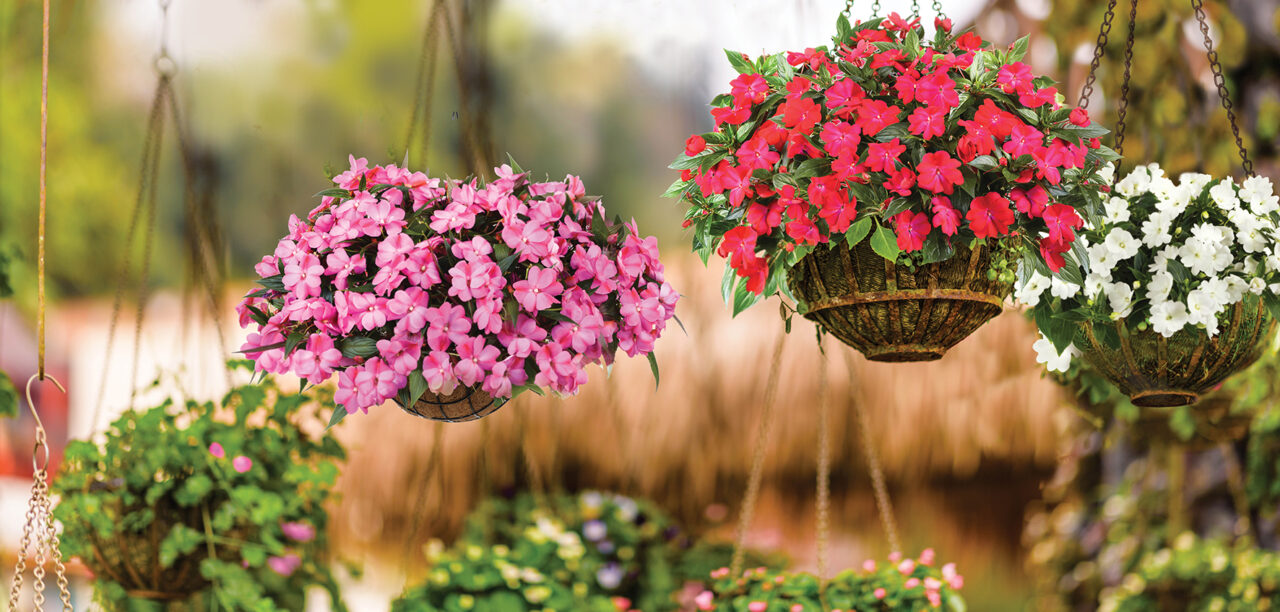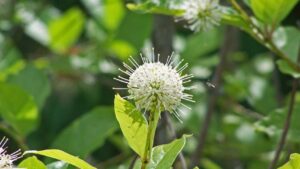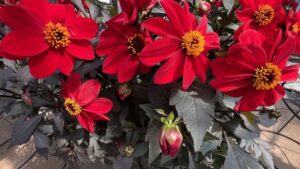Roseville Farms Crafts a New Legacy With Hemp
Roseville Farms in Apokpa, FL, is a 30-acre nursery with 560,000 square feet of benched greenhouse space, plus an additional 45,000 feet of indoor grow and production space. The company, which was #96 on Greenhouse Grower’s 2021 Top 100 Growers list, was launched in 1996, and for most of the last 25 years the only crop it consistently grew was clematis vines. In fact, for more than 20 years, Roseville has been the primary source for clematis liners and retail-ready flowering clematis for most major retailers and nurseries in the country.
However, even with this legacy, Roseville Farms President and CEO David Raab is not one to rest on his laurels. He knows the importance of adapting for the future, and recently, this has led to a somewhat profound shift.
So how is it working out? Keep reading to learn more.
A Long History of Clematis Production
Roseville Farms’ clematis success story actually goes back to when Raab was growing up on his family’s farm, White Rose Nurseries in Ontario, Canada. Despite growing a range of crops, the company still had to import some plants from European suppliers, and one of them was clematis. Potting them up from small twigs was a challenge, but Raab took on that challenge by developing a propagation technique that could root out even the smallest cuttings.
Raab ended up taking that challenge even further, vowing to eventually start his own clematis nursery. Fifteen years later, his dream became a reality.
When Roseville started growing clematis, it was a plant that was only sold in the spring, mostly as a dormant twig with a colorful label.
“In the year 2000, we developed a program where we could force the clematis into bloom on demand, and deliver direct to retailers a beautifully flushed and flowering clematis plant,” Raab says.
There were two key investments Raab made to make this delivery process possible. First, to address the plant’s need for vernalization, Raab added five large cooling facilities. Soon after, he purchased racks from a Belgium-based company that allowed Roseville’s retail customers, which included Walmart, to easily display the plants. This turned into a long-standing partnership with rack provider Container Centralen.
An Uncertain Future
Despite this success, there were some changing market dynamics on the horizon. Raab says it became more difficult to work directly with retailers, and as a result, Roseville Farms had to form new relationships with larger nurseries that could handle product delivery. While these partnerships have been mutually beneficial, Roseville was forced to only grow programs the nurseries it supplies were willing to handle.
“This stifled the growth of Roseville and, in fact, shrunk the business,” Raab says. “The clematis market in North America is small compared to other crops, and no matter the circumstances, we would only ever be able to do so much in sales because of the market size. Without direct shipping, we cannot economically produce other clematis products.”
When those market conditions are combined with the rising input costs and shrinking margins that other growers face, it raises the question of long-term viability, which is critical as Raab’s sons Dylan and Adam become more involved in ownership and management of the company.
“We needed to find another product to sell, and it had to be a product that our current facilities could grow,” Raab says.
Enter Hemp
Through past involvement with the University of Florida (UF) research center in Apopka, Raab had a discussion with the research director about the university’s plan to start a pilot program to develop knowledge on growing hemp, as well as to test and certify varieties for production in Florida.
“I saw this as an opportunity to learn about hemp and to work with the researchers to develop a testing protocol to certify varieties,” Raab says. “As it happens, the UF Institute of Food and Agricultural Science and Roseville Farms received a pilot program license. This program is about 18 months old, and we have certified more than 30 varieties for Florida growers.”
Through the pilot program and working with a consultant, Raab also met a hemp breeder who was donating plants to the research program at UF. Raab asked him what he needed to do to increase sales, and he learned the answer was in greenhouse production.
“It was not long after that we formed a contract with HM Health out of Colorado to grow their varieties exclusively for them,” Raab says. “We began an ambitious program to develop the growing protocol to produce product that met his standards, and while we have learned a great deal and are still learning, we decided that this is a product we will continue to grow and to pursue both in the greenhouse and indoor growing under lights.”
Constant Learning Process
Roseville Farms found its hemp niche in the boutique hemp market, which demands unique, flavorful varieties.
“Varieties with a pleasant mix of terpenes for flavor and smoothness are extremely important, and I have learned appearance is also key, which means the selection of genetics is key,” Raab says. “We believe we are working with one of the best hemp breeders in the country, HM Health, and we are now growing all new genetics of strawberry flavor, lemon, and even chocolate, all derived by breeding with diesel terpenes that produce exactly the unique kind of flavors we need.”
Raab says the future for hemp growers who choose to grow a superior product by either growing indoors or in a greenhouse exists, but he believes it will be more important to have the correct genetics.
At the same time, Raab says his team had to make substantial investments at the farm to accommodate hemp production:
- “We needed more power in each house, so we installed backup generators, which also helped prevent problems with power outages.”
- “We updated and installed grow lights and air circulation to provide the environment that hemp requires. For the indoor growing facility, we have spent more than $200,000 on LED lights.”
- “We also installed a blackout system in one 24,000 square-foot house before we realized that we could do it without blackout. During our research, we developed a theory that these varieties would vigorously go into flower without the need for blackout if lower levels of light were used to both induce and maintain flowering. So far, we have proven the theory correct, and dubbed it greyout instead of blackout.”
- “We had to retrofit a 5,000 square-foot building to do the drying using a system we designed with our refrigeration company. We now have two 2,500 square-foot rooms that are temperature and humidity controlled, and even in the dead of summer the system works at slowly drying, curing, and holding.”
Timing of harvest was also a concern that had to be addressed, as much of the nation’s hemp is harvested in the fall.
“We have modified our production schedule so that we do not produce greenhouse material that would finish and then have to compete with the fall crush,” Raab says. “Instead, we focus on our indoor grow, which runs 52 weeks a year. During that time, we use the greenhouses for growing retail-ready clematis. Growing finished clematis for retail requires no more than five months of greenhouse time and six weeks of cooler time, so those houses were all empty for seven months out of the year anyway.”
Keys to Future Success
Raab says he has no concerns about the long-term viability of the hemp market.
“The economic and environmental impact that hemp can create is huge, and we are only just exploring the endless uses the plant has,” Raab says. “However, it is important to identify the segment of the market that you think you can operate in and focus on that.”
Raab believes too many growers jumped into production without first finding someone to buy the product.
“Now that the nursery industry is getting involved, I think people will have a better idea on how to capitalize on this new market,” Raab says. “One thing for sure is hemp production is not going away any time soon.”
As for the future of Roseville Farms, Raab says while the company remains dedicated to clematis, it will also focus on perfecting the production of new hemp varieties to make sure the product is always in demand.
“Flowering clematis plants had never been seen until we developed the technique and brought them to market, and since the hemp market is in general very new, we believe we have the same opportunity to carve out a lasting place for our product, which will help the company survive another 25 years,” Raab says. “The ornamental plant business has experienced serious consolidation just like most industries over the last decade or two, and costs have continued to climb faster than wholesale prices, which makes margins a shrinking number. For family businesses like ours, continuing to innovate and invest in our facilities is necessary to give us the edge we need to survive.”
Always Looking for the Next Big Thing
Roseville Farms is no stranger to trying out new crops before the market becomes oversaturated. In 2011, the company began growing flowering blueberries for Costco that consumers could purchase as patio plants. At one point, it was producing nearly 20 varieties.
A couple years later, Roseville Farms President David Raab saw that the market was being flooded by several new growers, and he made the decision to get out of blueberries. Soon after, Roseville Farms ventured into cut clematis flowers, which became a huge hit (Raab even made an appearance on “Martha Stewart Living”). This lasted until early 2018, when it simply became too cost-prohibitive to grow cut clematis at a scale that made sense.
“We got out of cut flowers, and 18 months later, we were in the pilot project for hemp,” Raab says. “That’s kind of my motto, I guess: finding a market that is the least competitive that I can focus on and dominate.
“How do I compete? By trying not to compete.”
Meet the Team
Roseville Farms has a small but dedicated team of people running the organization, according to President and CEO David Raab.
- Lee Hicks is the General Manager and has been with the company since day one. He ran a greenhouse building company that Roseville hired to build all its greenhouses. By the time the job was done, Hicks was hired to run the Maintenance Department to keep everything in good working order, and eventually he became General Manager.
- Dan Webber, Vice President of Operations and Sales, worked for Green Circle Growers as National Sales Manager for more than a decade before he was hired 17 years ago. “Dan is well known in the industry by both retailers and nursery growers alike, and he extends our reputation as the only clematis grower in North America large enough to handle national chain store programs,” Raab says.
- Roger Simpson has been a propagator for more than 20 years and “has likely rooted more clematis liners than any other grower in the world.”
- Jimmy Scott is the Production Manager and now Head Hemp Grower. He has spent 24 years at Roseville.
The company remains family owned; Dylan Raab (29) and Adam Raab (27), the next generation, each own 24% of the business, leaving the controlling interest still in the hands of David and his wife, Kim. Dylan joined the company after graduating Rollins College with a degree in Environmental Studies in 2016 and has worked his way into the CFO position as well as handling all the administrative issues surrounding the hemp pilot program and the weekly testing of hemp during production. Adam, although still an owner/director of the company, has recently chosen to follow a separate path.
“I continue to act as President and CEO even after a two-year hiatus where I was lucky to receive a double lung transplant,” Raab says. “The team at Roseville did a great job keeping operations running while I was away.”





